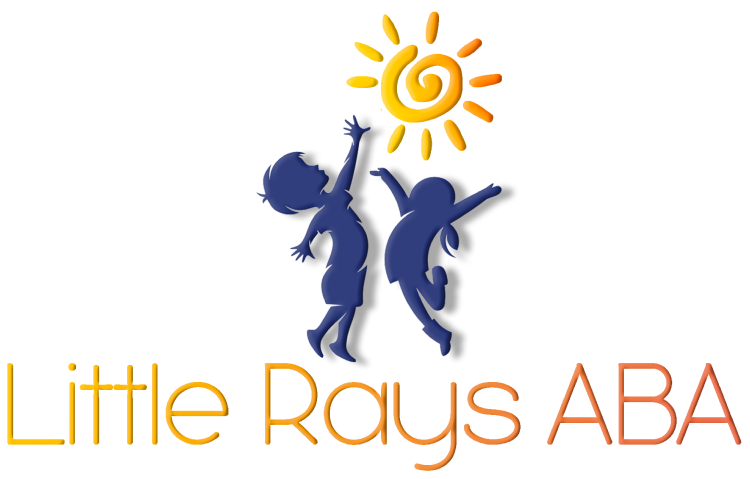Harnessing the Power of ABA Therapy Benefits
Applied Behavior Analysis (ABA) therapy is lauded as the “gold standard” for autism treatment, offering proven methods rooted in behavior analysis. This type of therapy works extensively with individuals on the autism spectrum disorder to build essential skills, such as communication, social engagement, and independence. By addressing developmental delays or problematic behaviors, ABA therapy contributes to enhancing the quality of life for those affected. In this blog, we uncover the profound impact ABA therapy holds in fostering meaningful change.
Exploring the Benefits of ABA Therapy
ABA therapy stands out by systematically fostering growth in various life dimensions. With its focus on teaching vital skills through research-backed techniques, it paves the way for behavioral improvement and long-term success. From enhancing communication to addressing problematic behaviors, ABA adapts to the unique needs of each individual.
Its benefits extend beyond the individual, influencing academic abilities, daily routines, and family dynamics. Engaging in ABA therapy provides a framework for developing independence, building confidence, and improving overall well-being.
1. Improvement in Communication Skills
Communication is often a challenge for children on the autism spectrum, making it a focal point in ABA therapy. By shaping communication skills and fostering robust language development, therapists support children in expressing themselves effectively. Techniques such as reinforcing simple phrases or encouraging non-verbal cues promote clear exchanges.
Language enhancement further feeds into social skills, enabling kids to connect with peers, adults, and caregivers. ABA employs systematic teaching to break down complex linguistic tasks into manageable steps, ensuring steady progress.
Ultimately, improved communication opens doors to better relationships and emotional expression, enriching both daily life and long-term personal growth. With continuous support and personalized strategies, ABA empowers children to find their unique voice.
2. Enhancement of Social Interactions
Social skills are pivotal for building relationships, yet children with autism spectrum disorder often struggle in this area. ABA therapy uses positive reinforcement to nurture social interactions, teaching behaviors such as sharing, eye contact, and taking turns. These skills often lead to creating meaningful connections with peers and family.
In therapy sessions, children practice responding to social cues in safe environments, honing their abilities to engage confidently in real-world settings. Role-playing scenarios and group activities also enhance comfort in social scenarios.
Through consistent effort and personalized approaches, ABA fosters emotional growth and equips children for success in communication and social settings, vital steps toward deeper interpersonal bonds.
3. Reduction in Problematic Behaviors
Problem behaviors, such as aggression or repetitive negative behaviors, can disrupt a child’s progress and daily life. ABA therapy focuses on creating lasting behavioral changes by identifying triggers and addressing them through targeted interventions.
Positive reinforcement is central to this process. By rewarding desired actions or behaviors, children are encouraged to adopt healthier patterns that replace counterproductive ones. Over time, this consistent approach steers children away from behaviors that limit their opportunities.
Behavior change doesn’t stop at reducing negative habits—it paves the way for developing emotional resilience. ABA ensures children experience an environment where they can thrive without disruptive incidents.
4. Increased Independence
The ultimate goal of ABA therapy is fostering independence, enabling children to navigate daily life confidently. Therapists help children acquire new skills, such as dressing, hygiene routines, and meal preparation, which contribute to self-reliance.
Each mastered step adds to their independence map, allowing kids to actively contribute to their own care. The repetition of practical tasks builds confidence, while structured guidance ensures they feel supported throughout the process.
Newly gained independence empowers children to take on larger personal goals and instills a sense of achievement. By bridging developmental gaps, ABA transforms struggles into strengths, unlocking capabilities for a fulfilling daily life.
5. Better Academic Performance
Success in school is integral for children’s development, and ABA therapy boosts academic performance by targeting learning abilities. Personalized teaching strategies are employed to enhance cognitive skills, attention, and task completion.
ABA therapists create structured environments where children can build focus and learn effectively. From improving memory to solving complex problems, tailored interventions address specific academic hurdles in manageable doses.
Enhanced cognitive skills not only support classroom activities but also foster a love for learning, ensuring long-term progress. ABA’s hands-on approach builds students' confidence in their abilities, translating into stronger academic outcomes.
6. Enhanced Family Involvement
Family involvement is a cornerstone of ABA therapy, as active participation accelerates progress. Parents and caregivers are often trained alongside certified behavior analysts to reinforce strategies at home and during therapy sessions.
Consistency between therapy environments and daily life ensures that children can practice newly learned behaviors, whether through meal routines or bedtime tasks. Family involvement extends ABA’s reach beyond formal sessions, offering a nurturing support system.
By engaging in aba services, families play a critical role in fostering positive outcomes—strengthening the parent-child bond and improving the household dynamic.
7. Positive Impact on Daily Living Skills
Daily living skills, essential for independence, are a key focus in ABA therapy. From brushing teeth to organizing belongings, therapists help children develop competencies that significantly enhance quality of life.
These life skills are often taught within real-world settings, ensuring children adapt quickly and understand their practical applications. Continuous practice helps establish habits critical for navigating adulthood with autonomy.
As children master daily routines, their confidence in taking charge of their actions grows. Independence in everyday activities marks a significant impact on their overall development.
8. Development of Employment-Related Skills
ABA therapy doesn’t just cater to present needs; it equips individuals for future challenges. With vocational training and job readiness at its core, the therapy prepares autistic individuals to tackle employment hurdles.
Therapists focus on employment skills like time management, teamwork, and workplace etiquette. Real-life simulations enable individuals to practice these skills in a protected environment.
By investing in these abilities, ABA facilitates a smooth transition into adulthood, helping individuals secure meaningful employment opportunities.
9. Strengthened Attention and Focus
Attention skills are crucial for learning and daily tasks, but they often require targeted interventions for children on the autism spectrum. ABA integrates focus-building activities into therapy, gradually increasing attention span and cognitive development.
Through structured exercises and positive reinforcement, children learn to maintain focus on tasks and follow instructions. As their concentration improves, so do their problem-solving and critical thinking abilities.
Improved attention skills lay the groundwork for academic, social, and personal achievements. ABA paves the way for children to channel their focus effectively into constructive outcomes.
10. Support in Transition to Adulthood
The shift into adulthood presents unique challenges, and ABA therapy plays a pivotal role in this significant life stage. By working on skills such as decision-making and independence, therapists equip individuals for this transitional phase.
Education continues with tailored life lessons, from financial planning to navigating social relationships. The therapy instills confidence in individuals, preparing them to take up responsibilities and adapt to adult environments.
ABA supports individuals in navigating their life stages effectively, ensuring a smoother transition to a fulfilling adult life.
Understanding ABA Therapy Techniques
ABA therapy is composed of specialized techniques designed to foster learning. Discrete Trial Training (DTT) employs a step-by-step teaching method, focusing on one behavior at a time, making it ideal for early intervention.
Natural Environment Training (NET), on the other hand, incorporates lessons within real-life settings, encouraging generalization across different contexts. These techniques emphasize practical learning and are adaptable to individual needs, improving overall engagement and success rates.
Basics of Discrete Trial Training (DTT)
Discrete Trial Training (DTT) is a structured form of applied behavior analysis designed to teach new skills through repetition and reinforcement. This method breaks down complex tasks into manageable components, allowing autistic children to achieve mastery at their own pace. During therapy sessions, a certified behavior analyst carefully implements this approach, utilizing positive reinforcement to encourage desired behaviors. By focusing on specific, measurable goals, DTT has proven to significantly enhance communication skills and social interactions, ultimately improving the quality of life for children with developmental delays.
Principles of Natural Environment Training (NET)
Natural Environment Training (NET) focuses on teaching skills in the natural contexts and settings where children engage daily. This approach effectively incorporates everyday activities, allowing children to learn functional communication and social skills through authentic interactions. By emphasizing real-world scenarios, NET promotes generalization of new skills, enabling children to apply what they learn during therapy sessions to their daily lives. Using techniques such as positive reinforcement, this type of training ensures a more meaningful and enjoyable learning experience for autistic children, leading to enhanced quality of life.
The Role of Family in ABA Therapy
The involvement of family is integral to successful ABA therapy outcomes. Active participation ensures consistency between home routines and therapy sessions, which accelerates progress. By collaborating with therapists, families learn supportive techniques that help children master essential skills effectively.
This shared approach builds trust and reinforces efforts, resulting in significant improvements in both the therapy process and the household dynamic.
Ways Families Can Support ABA Interventions
Families play an active role in ABA therapy, creating a bridge between structured sessions and everyday life. By practicing learned behaviors during daily routines, parents reinforce therapy outcomes and provide continuity.
Consistency in applying strategies—such as positive reinforcement—ensures steady progress, empowering children to thrive beyond therapy scenarios. Family support instills a sense of reliability and comfort for the child.
Through shared efforts, ABA therapy becomes a collaborative journey, benefiting both the child and the family.
Importance of Consistency in Home and Therapy Settings
Consistency is vital in ABA therapy as it builds reinforcement for learned skills. Maintaining uniform strategies across home and therapy environments allows children to practice behaviors seamlessly.
Families are trained alongside therapists, ensuring a synchrony that supports the child’s developmental goals. Behavior management is optimized when children do not face conflicting expectations between home and therapy. With steady application, consistency becomes the cornerstone of effective therapy outcomes.
If you’re looking for personalized and effective support for your child, in-home ABA therapy near me offers a great solution. With therapy provided in the comfort of your own home, your child can benefit from a customized approach that focuses on their unique needs. In-home ABA therapy allows for more consistent practice, tailored interventions, and a familiar environment that helps children feel comfortable while making progress. Ready to learn more about how in-home ABA therapy can transform your child’s life? Contact a local provider today to start the journey toward meaningful growth and success.
Conclusion
In conclusion, the benefits of ABA therapy are vast and transformative, impacting not only the individuals receiving the intervention but also their families and communities. From improving communication skills and social interactions to fostering independence and better academic performance, ABA therapy equips individuals with the tools they need to thrive in various aspects of life. By understanding the techniques involved and the critical role families play in this process, we can pave the way for success and growth. If you're considering ABA therapy for yourself or a loved one, remember that support and consistency are key ingredients to a positive outcome. Don't hesitate to reach out with any questions or to explore how ABA therapy can make a difference in your life. Together, we can harness its full potential for a brighter future.
At Little Rays ABA, we harness the power of ABA therapy to unlock each child’s potential, promoting lasting improvements in behavior, communication, and social skills. Our tailored therapy programs are designed to meet your child’s unique needs, providing them with the tools they need to thrive. With a compassionate, results-driven approach, we empower families to create positive change and support their child's growth. Ready to see the benefits of ABA therapy in action? Contact Little Rays ABA today and take the first step towards a brighter future for your child.
Frequently Asked Questions
How long does ABA therapy typically last?
ABA therapy duration depends on individual needs but often ranges between 20 to 40 hours per week. A certified behavior analyst assesses treatment goals and progress regularly to ensure maximum effectiveness, particularly for children on the autism spectrum.
What age group benefits most from ABA therapy?
Early intervention between ages 2 and 6 yields optimal results for ABA therapy. This period aligns with critical stages of child development, allowing therapy to address developmental delays effectively and build essential skills.
What are the key principles of ABA (Applied Behavior Analysis) therapy?
The key principles of ABA therapy include positive reinforcement, data-driven decision-making, and individualized intervention plans. It emphasizes observable behaviors, encourages skill acquisition through systematic teaching methods, and seeks to reduce maladaptive behaviors by modifying the environment and using effective strategies.
Sources
- https://www.commonwealthautism.org/teaching-outside-of-the-table/
- https://www.autismspeaks.org/expert-opinion/what-discrete-trial-training
- https://www.nidcd.nih.gov/health/autism-spectrum-disorder-communication-problems-children
- https://pmc.ncbi.nlm.nih.gov/articles/PMC11487924/
- https://pmc.ncbi.nlm.nih.gov/articles/PMC3411865/
- https://www.simplypsychology.org/positive-reinforcement.html
Related Posts





